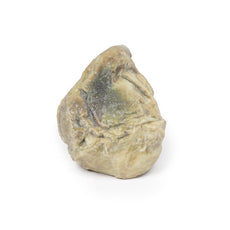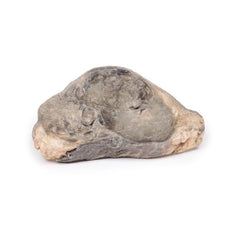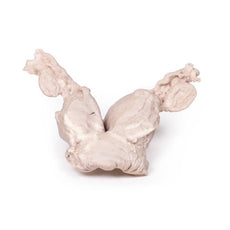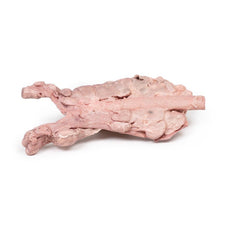Your shopping cart is empty.
3D Printed Retrosternal Goiter
Item # MP2102Need an estimate?
Click Add To Quote

-
by
A trusted GT partner -
3D Printed Model
from a real specimen -
Gov't pricing
Available upon request
3D Printed Retrosternal Goiter
Clinical Presentation
A 60-year-old female presented with an abnormal swelling in the neck,
persistent cough and difficulty swallowing. She gained weight over the previous few years. She died of unrelated
cardiovascular disease and the specimen was obtained at post-mortem.
Pathology
The specimen, removed at post-mortem, includes the larynx, trachea and large
multilobular thyr
3D Printed Retrosternal Goiter
Clinical Presentation
A 60-year-old female presented with an abnormal swelling in the neck,
persistent cough and difficulty swallowing. She gained weight over the previous few years. She died of unrelated
cardiovascular disease and the specimen was obtained at post-mortem.
Pathology
The specimen, removed at post-mortem, includes the larynx, trachea and large
multilobular thyroid gland. The thyroid gland is grossly enlarged particularly the right lobe, which has two large
lobes extending superiorly and inferiorly for a range of 7-8mm, well beyond its normal margins when viewed on
anterior aspect. Posteriorly, the oesophagus has been opened to expose the posterior wall of the trachea. The right
lobe presents as larger than from the anterior perspective, and the abnormal growth appears to be mainly the
inferior pole of the right lobe. The surfaces do not display major pigmentary changes. Prominent veins are visible
on the surface of the right lobe.
Further information
Goitre is most often detected simply as a mass or swelling in the neck but
depending on the size and location of growth it may produce pressure symptoms on the trachea and the oesophagus.
There may be difficulty in breathing, dysphagia, cough, and hoarseness. Paralysis of the recurrent laryngeal nerve
may occur by an expanding goitre, but this is rare. Symptoms suggesting obstruction of the trachea including cough,
stridor and shortness of breath may occur. Occasionally tenderness and a sudden increase in goitre size arise due to
cystic expansion and haemorrhage into a nodule [1].
Causes of goitre include autoimmune disease (Hashimoto’s
thyroiditis, Grave’s disease), the formation of one or more thyroid nodules and iodine deficiency. Goitre occurs
when there is reduced thyroid hormone synthesis secondary to biosynthetic defects and/or iodine deficiency, leading
to increased thyroid stimulating hormone (TSH). This stimulates thyroid growth as a compensatory mechanism to
overcome the decreased hormone synthesis. Elevated TSH is also thought to contribute to an enlarged thyroid in the
goitrous form of Hashimoto thyroiditis in combination with fibrosis secondary to the autoimmune process in this
condition. In Grave’s disease, the goitre results mainly from stimulation by the TSH receptor antibody[2].
Reference
1. Hughes et al. (2012) Goitre: Causes, investigation and management
2. Aust Family Physician, 41,
572-576.
 Handling Guidelines for 3D Printed Models
Handling Guidelines for 3D Printed Models
GTSimulators by Global Technologies
Erler Zimmer Authorized Dealer
The models are very detailed and delicate. With normal production machines you cannot realize such details like shown in these models.
The printer used is a color-plastic printer. This is the most suitable printer for these models.
The plastic material is already the best and most suitable material for these prints. (The other option would be a kind of gypsum, but this is way more fragile. You even cannot get them out of the printer without breaking them).The huge advantage of the prints is that they are very realistic as the data is coming from real human specimen. Nothing is shaped or stylized.
The users have to handle these prints with utmost care. They are not made for touching or bending any thin nerves, arteries, vessels etc. The 3D printed models should sit on a table and just rotated at the table.



































































































